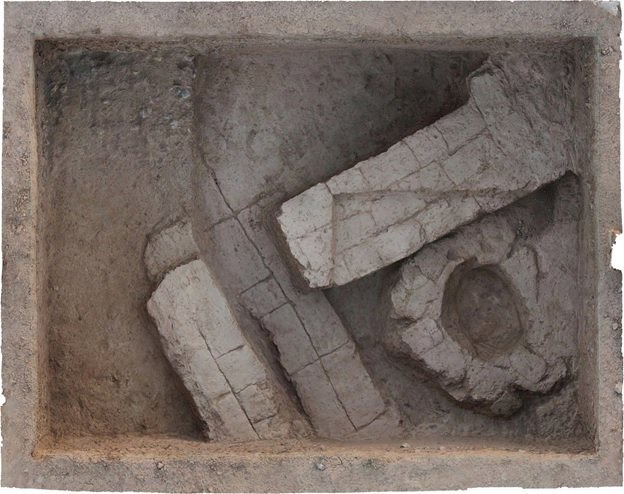Archaeologists discover early example of administrative management in eastern Iran

TEHRAN – Iranian archaeologists have found what they say is an early example of administrative management in an eastern Iranian region and hope it will offer new clues about people who lived there some 6,000 years ago.
The discovery was made during the third archaeological excavation season which is currently underway in Kale-Kub, which is situated in Sarayan county of South Khorasan province.
“More than ten days after the start of the excavation, we found remnants of industrial architecture, adobe brick walls, and potteries, which offer evidence of social complexity and an administrative management system,” CHTN quoted archaeologist Mohammad-Hossein Azizi Kharanaghi as saying on Tuesday.
Kale-Kub is one of the few historical sites in the region that has archeological evidence of the sequences of different cultures from the fifth to the second millennium BC, Azizi Kharanaghi, who leads the survey, explained.
Referring to previous excavations of the site, the archaeologist has said: “In 2018, two trenches were opened to identify the stratigraphy of the high amount of beveled rim bowls in addition to other pottery styles belongs to fourth millennium BC which are already known in southwestern Iran.”
The archaeologist hopes their studies would clarify the importance of the Kale-Kub site for identifying the dispersal zone of “Beveled rim bowl pottery style” through the classification and typology of the discovered potteries and then a comparison between the pottery style in this site with other sites related to this period.
“Also, we attempt to trace the possible routes for this pottery style to the East and the interaction between the east and west of Iran. Pottery collection from the excavation in Kale-Kub includes a high amount of beveled rim bowls, Banesh tray, and some other pottery styles which are well-known from the fourth millennium BC such as nose handle and spouted wares.”
In modern Iran, these pottery styles are reported from the southwest, central Zagros, central plateau, and southeast. Experts believe findings in Kale-Kub show the extension of this culture to the east part of Iran.
Inter-regional interactions had a significant effect on the movement of raw material and production in the extended area. Because of the geographical situation of Kale-Kub in the east of Iran and the existence of metal mines in the region, this site possibly appeared as a supplier place in the interaction networks for the southwest of Iran during the fourth millennium BC.
AFM
Leave a Comment